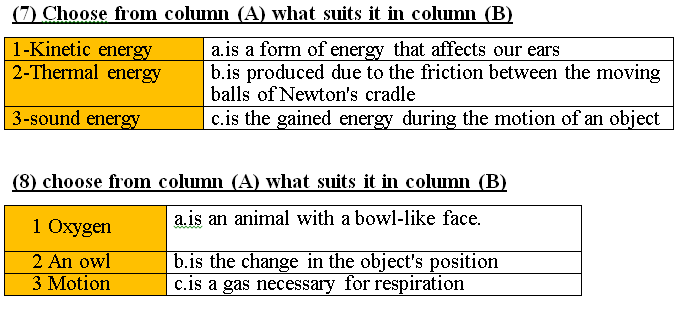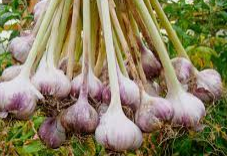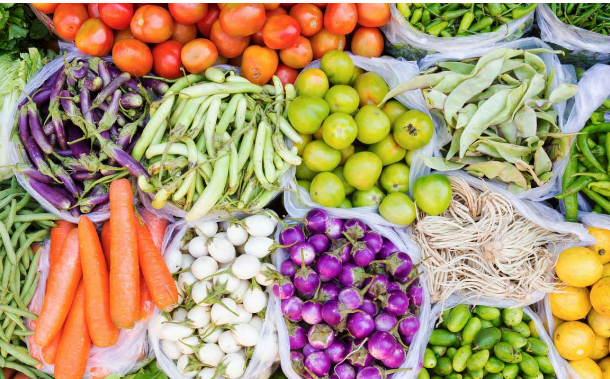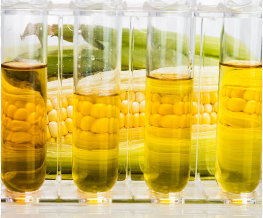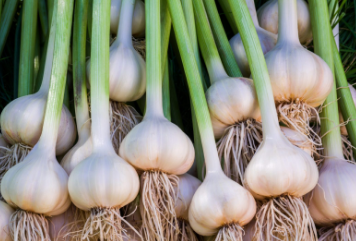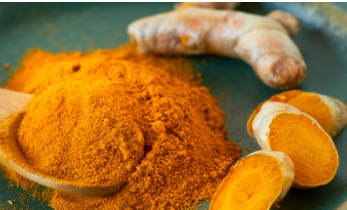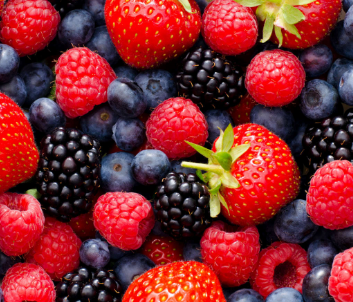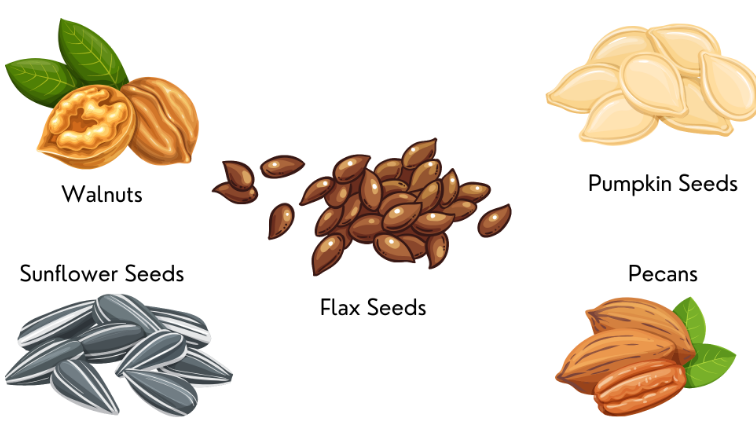1)Write the scientific term:
1-The moved through a unite time
2-The combination of male gamete and female gamete to from zygote
3-The space which contains all the galaxies stars planets and living organisms
4-The regular speed by which the object moves to cover equal distance at the same period of time
5- an optical piece is thin at its center and more thick at the tips and diverging light rays falling on it.
6-Asexual reproduction takes place in some plants without seeds
7-A group of stars that rotate together in cosmic space by the effect of gravity
8-The angle between the reflected light ray and the normal line at the point of incidence on the reflecting surface
9- Fusion of the male gamete and the female gamete to form the zygote
10-The speed of an object relative to an observer
11-The force that controls the orbits of the planets around the sun according to the modern theory
12-specilaized cells which produce gametes
13-changing in the position of an object as time passes according to a fixed point
14-A point inside the lens that lies on the principle axis at mid distance between the faces of the lens
15-Some theing that includes all galaxies , stars , planets and living organisms
16-The rebounding of the light to the same side when it strikes a reflecting surface
17-It is located in one of the spiral arms of the milky way galaxy on the edge of the galaxy
18-A medical case as a result of the formation of the image behind the retina
19-The total distance that a moving object covers divided by total time taken to cover this distance
20-The object speed changes (increase or decreases ) by equal values through equal periods of times
21- A biological process where the living organisms produces new individuals of the same kind and thus ensuring its continuity
22-The angle between the incident light ray and the perpendicular line on the reflecting surface from the point of incidence
23- the nucleic acid that carries the genetic traits of the living organism
24-A mirror , always forms a diminished image for the object
25-The displacement in one second
26-Groups of stars gathered indistinctive shape
27-The ability of some animals to compensate their missing parts
28-The point of connection of the two chromatids in a chromosome
29-Line that passes through the optical centers of curvature of its faces
30-The distance between the pole of a spherical mirror and its center of curvature
31-The speed of a moving body that covers equal distance at unequal time intervals
32-The speed of a moving object relative to a constant or moving observer
33-The mirror whose reflecting surface is a part of the inner surface the sphere
34-A point inside the lens lies on the principle axis in the mid distance between its faces
35-The nucleic acid that carries the genetic materials of the living organisms
36-Bouncing of the light to the same side when it strikes a reflecting surface
37-The straight line that passes by the center of curvature of the mirror and its pole
38-A glowing gaseous sphere formed the planets of the solar system
39-it is a mirror that its reflecting surface is a part of hollow sphere
40-The change in the position of an object by the time relative to a reference point
41-The mid-point on the reflecting surface of the mirror
42-The part in the cell which is responsible for cellular division
43-The incident light ray the reflected ray and the normal line all lie in the same plane perpendicular to the reflecting surface
44-The combination of a male gamete and a female gamete to form a zygote
45-The total distance covered by the moving object divided by the total time taken to cover the distance
46-A type of asexual reproduction that occurs in simple algae
47-A phase in which some important vital process occurs to prepare the cell for division and the mount of genetic material duplicate
48-It is the ability of some animals to compensate their missing parts
49-It is a theory that explains the origin of the universe from a massive explosion since 15000 million years
50-The mass of the cells which result from the abnormal cell when it is continually divided without controlling
51-Boilogical process where the living organisms produces new individual of the same kind and thus ensure its continuity
52-It is a very thin plastic lenses and can stick to the eye cornea
53-It is the regular speed by which the object moves to cover the same distance at the same period of time
54-A disease that infects the eye lens and it becomes opaque
55-A vector quantity that equals the displacement in one second
56-Chemically consists of DNA and protein
57-A physical quantity that represents change in the object speed in unit time
58-Fibers extend between the tow poles of the cell in prophase
59-The image that can not be received on the screen
60-A theory assumed that the solar system was originally a big star which is the sun
61-A flat gaseous round disk that formed the solar system planets
62-A cell division that occurs in the somatic cell and results in the growth of the living organism
63-The actual length of the path that a moving object takes from the starting point to the end point
64-It is located in one of the spiral arms of the Milky way on the edge of the galaxy
65-The line between the two centers of curvature of the lens passing by the optical center of the lens
66- The phase which the cell prepares to division by duplicating the genetic material
67-The displacement covered through a unit time
68-The point of connection of the 2 chromatid of the chromosome
69-A type of asexual reproduction that takes place in plants vegetative organs without seeds
70-A theory based on an astronomical phenomenon in which a star was glowing for a short time and then its glowing disappears gradually
71-The value of an objects speed relative to the observer
72-The the total distance covered by a moving body divided by the total time
73-The physical quantity that has magnitude only and has no direction
74-An optical piece is thin at its center and more thick at the tips and diverging light rays falling on it.
75- A Mirror can be used to get virtual upright and magnified image of an object
76-Angle of incident light ray equals its angle of reflection
77-A mirror used to form virtual upright and diminished image
78-The line that joins between the two centers of curvature of the lens passing by the optical center of the lens
79-Half the diameter of the sphere where the face of the lens is a part of it
80-The straight line that passes by the center of curvature of the mirror and any point of its surface except its pole
81-intersection which are produced when the light rays fall parallel to the principal axis of the a lens
82- seeing the near objects clearly and seeing the far object distorted
83-A flat gaseous round disk that formed the solar system
84-The celestial body which the solar system was formed in chamberlain and Moulton theory
85-The scientist who established the nebula theory
86-A theory assumed that the solar system was originally the sun
87-The unit which is used for measuring the distance between celestial bodies .
88-It is a wide and extended space that contains all the galaxies stars and planets
89-A theory explains the origin of the universe from a massive explosions since 15,000 millions years.
90-The theory that explained the formation of the galaxies and the stars .
2)Write the scientific term for each of the following :
1-A unit is used for measuring the distance between celestial bodies. light year
2- The point at which the rays which incident parallel to each other and parallel to principle axis of the concave mirror are collected. principle focus of concave mirror
3-The cells produced from meiosis cell division and contain half the number of chromosomes. Gametes
4-Apoint in the middle of the lens lies at the principle axis in the mid distance between its faces. Optical center
5-The ability of some animals to compensate the missing parts by reproduction. Regeneration
6-The thin which moves by constant velocity in the space even the surrounding conditions are changed .The light
7- A process in which the inner parts of chromatids of each tetrad are exchanged. Crossing over
8-linked to the change of an object position as time passes according to the position of an the object .The motion
9-The line joining the center of curvature of the lens and its optical center.
The principle axis
10-A flat gaseous round disk that formed the solar system. Nebula
11-indirct cell division (mitotic or mitosis)
12-reduction division (meiotic or meiosis)
3)Define:
1-spindle fiber: fibers extend from the 2 poles of the cell or from cytoplasm of the plant cell in prophase
2-abody covered 40 m northward direction in 20 second :the velocity = 2 m/sec
3-the angle of reflection =30: the angle between the reflected ray and the normal=30
4-a car covers equal distance in equal periods of time: the car moves by regular speed
5-the lens: transparent medium refracts light and limited with 2 spherical surfaces
6-the relative speed : it is the speed of moving object relative to observer
5- Light reflection:
-It is the phenomenon of the light bouncing “return back” off in the same medium when it meets the reflecting surface.
6- Spherical Mirrors:-It is a mirror that its reflecting surface is a part of hollow sphere
7-the crossing star :-it’s the huge star which was attract a part of the sun
8-mitotic cell division :
-the division which occurs in somatic cells and reproductive( no in neural cells or adult red blood cell)for growth of living organisms and compensate the damage cell and complete the asexual reproduction
4) What is meant by (define)?
1-the optical center of the lens :
-appoint inside the lens on principle axis at mid point between its faces
2-vegetative reproduction:- asexual reproduction that takes place in plants without seeds
3- Nebula: glowing gases sphere rotate around itself and formed the planets
4-irregular speed :
-it is the change in object position by equal distance at unequal periods of time
5-centromere: -the point of connection of the 2 chromatids of chromosome
6-virtual image: -image that cant received on screen
7-A body moves by acceleration equal zero : -the body moves with uniform speed
8-a person suffers from a long sightedness :
– the person see the far object clearly and the near object less clearly
9-fertilization: the fusion between male and female gametes to produce zygote
10-regeneration:ability of living organism to compensate the missing parts
11-dispacment: the shortest straight line between the start point and the end point of the moving object
12-the center of convex mirror of curvature: the center of the sphere that the mirror is part of it
13-the second law of light reflection: the incident light ray ,the reflected rat and the normal all lie in a plane perpendicular to the reflecting surface
14- the first law of light reflection: incident angle=reflected angle
15-the light year :the distance covered by light in one year
16- a body moves by acceleration =-2 m/sec2 :the rate of change of its speed equal=-2m/sec
17-the radius of curvature of a concave mirror =8 cm : the distance between the center of mirror and any point at its surface =8 cm
18- the light year= 9.46 x 1012 km :the distance covered by light in one year = 9.46 x 1012 km
19-the focus of the concave mirror- It is the point of collection of the reflected light rays
20-the secondary axis of the concave mirror
It is the straight line which passes by the center of curvature of the mirror and any point on its surface except the pole of the mirror
21- A moving car covers a distance of 100 km in 2 hours
- The car moves by a speed of 50 km/h
22-the focal length of a convex lens =8 cm
-the distance between the focus and the optical center =8 cm
23-The change of an objects location as time passes
-The motion of the object
24-the focal length of a lens is 7 cm
-the distance between the focus and the optical center of the lens is 7 cm
25-An object moves with acceleration equals zero
-The object moves with regular speed
26-the angle of reflection of a light ray is 45
-the angle between the reflected light ray and the normal is 45
27-The space is in a continuous motion
-This due to the continuous motion of galaxies in the universe
28- the formed image by the plane mirror is virtual
-It can’t be received on a screen
5)What is the importance of :
1-The Hubble telescope: used to collects photos for universe to study the evolution of the universe after the Big Bang
2-Nano-molecules of gold: used to attach to the cancerous cells and monitor them
3-The telescope: used for formation enlarged images for the heavenly bodies
4-The convex mirror: used as side –view mirror on the passenger’s side of a car
5-solar telescope
6-spindle fibers
7-cytoplasm in plant cell
8-centrosome in animal cell
10-Big bang
11- nebular theory
12-crossing star theory
13-lesns
14-Mirrors
15-DNA
16-Chromosome
6)Give reasons ?
1-The force and force are considered as a vector quantity –because they have magnitude and direction
2- the mass is scalar quantity ? –because it has magnitude only
3-before starting division the cell passes through interphase(cellular division begins with interphase ): -To duplicate genetic materials (DNA)
4-The convex lens is used to correct the long-sightedness -To return the image on retina
5-the asexual reproduction depends on the mitosis-to produce complete copy of the parent
6-the sexual reproduction is the source of genetic variation
-due to the combination between the male gamete and female gamete
7-the spherical mirror has only one principle axis
-Because it has one spherical surface
8-most of moving cars can not move inside crowded town all the time by uniform speed
-due to the traffic and road condition
9-The stability of earth in an orbit around the sun -due to the gravitational force
10-the number of chromosomes is constant in the same species which reproduce sexually
-because it results from combination of male gamete(N) with female gamete(N)
11-the mitosis is important for children than the meiosis
-because it responsible for growth of children
12-the word a MBlIANCE is written in a converted way on the car
-to appears in correct way on front of driver
13-the perpendicular incident light ray on the plane mirror reflects on itself
- Because the incident angle = the reflected angle=0
14-a convex mirror is put at the left side of the driver of the car
-to get a small ,erect image of the way
15-the continuous expansion of the space-due to the continuous separation of galaxies
16-the importance of speedometer in the car- to measure the speed of the car directly
17-the importance of occurrence of crossing over phenomenon
-to causes genetic variation of traits in the offspring
18-the individuals resulted from the sexual reproduction are not similar to one of parent
-because it produced from combination of male and female gametes
19-the movement of the train can be considered as a motion in one direction
-because it moves forward and backward
20-Galaxyies move away from each others-due to continuous expansion of universe
21-the lens has two foci but the spherical mirror gas one focus only
Because the lens has 2 spherical surface but the mirror has one spherical surface
22-the moving car with a certain speed seems to be at rest to the moving observer with the same speed and the same direction
-because the relative speed equals the difference between their speed = zero
23-concave mirrors are used to generate high heat energy
-because it collects the ray on focus
24-physicists use mathematical methods like graphs and table
-To easy study the physical quantities and find the relation between them
25-Asexual reproduction keeps the genetic structure of the living organism
-because it produced from one parent by mitotic division
26-pilots take in consideration the velocity of the wind
-Because flying of airplane opposite the wind needs more fuel and more time
27-The focal length of a concave can be determined by knowing its radius of curvature
-be cause lte F=r/2
28-The image formed by the convex mirror cant be revived on screen
-Because it is virtual image formed by the intersection of refected ray from the mirror
29- The image formed by the convex mirror is virtual image
Because it cant received on screen and it is formed by intersection of extension of reflected rays
30-Most of the people cannot write by correct way while they are seeing their writings through plane mirror.
-Because the formed image is laterally inverted.
31-The most moving cars cannot move inside crowded towns all the time by uniform velocity -Due to the traffic of road and station conditions
32-It is impossible to obtain real image by using concave mirror only
-Because it diverges the light rays.
33-The moving car seems stable to the rider of another moving car beside
it with the same speed and direction
-Because the relative speed for the 2 cars in same speed and direction is the difference between their speed ( V2 – V1) =zero.
34-Asexual reproduction produces offspring identical to their parents
Because the new individuals contain an identical copy of hereditary traits of the patent cell by mitosis division
35-Occurrence of interphase before starting cell division
-to prepare the cell to cell division by duplication of genetic materials
36-When the object is placed on focus of convex lens no image is formed
-because the refracted rays from the lens cant intersect at any point
37 – there are new races of grapes when they reproduce by vegetative reproduction
-because it occurs by one parent and by mitotic division to produce new individuals identical to the parent
38-The nebula lost its sphere from and become in a form of flat rotating disc
-Due to the effect of centrifugal force
38-The body move with acceleration cant move at regular speed
-Because the acceleration is the change in object speed and the regular speed is a constant speed (not change in speed so a=0)
39-The shrinking of spindle fibers during the anaphase
-To drag the chromosomes towards the cell poles
40-(distance –Time) graph of an object that moves at uniform speed is a straight line passing through the origin point
-Because from V= distance/ time the relation between distance and time is direct relation when v is constant
41-the shortsightedness is corrected by a concave lens
-to to diverge the ray to return the image from front of retina to be formed at retina
42-The cell division begins with interphase before starting mitosis division
-to duplicate the genetic material and to make some vital process
43-The lens has 2 centers of curvatures
– because the lens is a part from 2 spherical objects each object has a center of curvature
44- binary fission is considered a mitotic division
-because it produces 2 cells each cell is identical to the parent cell
45-Crossing over phenomenon is an important factor in genetic variation among individuals of the same species
-due to the exchanging between the 2 parts on inner chromatid where each part carries a genetic traits
46-Every galaxy has a definite shape differs of other galaxy
-Due to the harmony and order of stars in it
47-Meiosis division is called reduction division
-because it produces cells has half(N) numbers of chromosomes that are in parent cell
48-Pilots take in consideration the velocity of the wind
-because when they fly in the opposite direction of the wind the consume more fuel and more time and vice versa
49-The image formed by plane mirror can not received on screen
Because it is virtual image that is formed behind the mirror
50-When you look at the mirror you see your image
-due to regular reflection of light on the smooth surface of the mirror
51-Mitosis is important for children unlike the meiosis
-because it is responsible for growth and compensate the damage cells while meiosis occurs in adult age
52-The perpendicular incident light ray on the plane mirror reflects on itself
-Because the incident angle=the reflected angle =ZERO
53-Cataract disease infects the eye
-because the lens become dark due to the old age ,drugs and genetic readiness ,illness
54-sexual reproduction is a source of genetic variation
-because it occurs between male(N) and female (N)gametes with deferent genetic traits and cross over occurs
55-The sun escaped from the gravity of the huge star in the crossing star theory
-due to the explosion of the attracted part of the sun that faces the huge star
56-The constancy of the planets in their orbits around the sun
-due to the gravity of the sun
57-The number of chromosomes is constant in the same species which reproduce sexually
-because it is formed by combination of male gamete(N) with Female gamete(N)
58- in shortsightedness the retina is far from the eye lens
-due to increase the eye diameter and increase the convexity of the eye lens
59-The object which moves at regular speed its acceleration equals Zero
-because the V1=V2 so a=v2-v1/t = 0
60-speed of a moving body increases by decreasing time needed to cover a certain distance
-Because speed = distance/ time so speed is inversely proportional to the time at constant distance
61-The formed image by convex mirror is always virtual
-because it can’t received on screen
62-uniform speed of a car is hardly to done practically
– due to the change in speed a cross the time that depends on the traffic in street
63-The convex mirror is placed in the left side of the driver.
-to make erect and smaller images for things behind him
64-The constancy of the earth’s rotation in an orbit around the sun
-Due to the gravitational force.
65-Mitosis division is important for children than the meiosis.
-Because mitosis is important for growth of living organisms and compensate the damaged cells
66-The number of chromosomes is constant in the same species which reproduce sexually
Because the species is produced from combination of male gamete(N) and female gamete (N) forming zygote (2N)chromosomes
8)Complete the following statements with suitable words :
- The convex lens …………. The light rays , while the convex mirror……. The light rays .
- The chromosome chemically consists , of unclear acid called ……….. and protein .
- The scientist who established the nebular theory is ….
- Force is considered as ……… physical , while the mass is considered as ………… physical quantity .
- Somatic cells divide by ………. Division, while reproductive cells divide by ……. Division.
- The gamete has number of chromosomes equals………. The number of chromosomes in the original cell .
- The image formed by …….. lens is always virtual , upright and diminished .
- The somatic cells divide b …. Cell division, while the reproductive cells divide by …………. Cell division .
- If the angle between the incident light ray and the reflected light ray on a plane mirror = 120. Then the angle of reflection = ……………
- The chromosome chemically consists of …… and protein.
- The Solar system is located in the …………..
- The result of multiplying the speed of a moving object by time = ………….
- The tow factors necessary for the description of movement are ……….. and ………
- If the light ray falls passing through the focus of the concave mirror, it will reflect …..
- From the properties of the image formed by a plane mirror are …… , ……. And ….
- The universe is ……….
- In flowering planets, the pollen are formed inside the ……… , while the ovules are produced inside the ……..
9)Complete the following by suitable scientific words:
1) The somatic cells divide by Mitotic cell division while the reproductive cells divide by …Meiotic cell division
2) The yeast fungus reproduces by budding which is considered as a type of Asexual reproduction
3) From the example of living organisms which reproduces by regeneration is Starfish
4) When the male gamete fuses with female gamete A zygote is formed
10)What happens when:
1-the diameter of the eye ball becomes larger than normal
-The image of object is formed far away in front of retina so short sightedness occurs
2-A light ray falls perpendicular on a plane mirror – it reflects on itself
3-fusion of a male gamete with a female gamete -A zygote is formed
4-a light ray falls parallel to the principle axis of the concave mirror
- It reflects passing through the focus
5- a light ray falls passing the focus of the convex lens
-it refracts parallel to the principle axis
6- a light ray falls passing through the focus of the concave mirror
-it reflects parallel to the principle axis
7- a starfish loses an arm with a part of central disc
– it will be compensate the missing part and the missing part will be regenerate forming new individual
8-A light ray is incident passing through the center of curvature of concave mirror
-it will reflects on itself
9-Focusing laser on the gold Nano-molecules in the cell infected by cancer
- The cell will be exploded
10-The acceleration of an object moves at uniform speed
-the acceleration = ZERO
11-when combination of male gamete with female gamete to form zygote
-Fertilization occurs then mitotic division occurs to form embryo
12-The acceleration with which the body is moving equals zero
The body moves with uniform speed where its final speed equals its initial speed
13-The distance between a planet and the sun increases
-the effect of gravity decreases and planets movement becomes slower
14-A ray passing the optical center of the lens –it passes through the lens without refraction
15-Body is placed at the double focal length of the concave mirror.
Areal inverted equal image is formed at the center of curvature
16-Putting yeast fungus in a warm sugar solution.
-New individuals are produced by budding in a form of a colony or separated
17-Absence of centrosome from the animal cell
-spindle fivers are not produced in cell division
18-The nebula lost its temperature in Laplace
-its size decrease and its speed increases
19-A person who has long sightedness defect is used a convex lens while reading
-to return back the image from behind the retina to form on retina
20-Amoving body covers the same distance in half the time according its speed
-the speed increases to double value
21-crossing over occurs
– genetic variation occurs
22-reprodctive cell do not divide by meiosis
-gametes are not formed
23-A moving object completes a complete cycle(concerning displacement and speed)
– displacement=0 and velocity=0
24-the object moves in straight line(concerning displacement and speed and velocity)
-distance= displacement and speed= velocity
25-Bulge is disconnected from the parental cell in the yeast fungus after it fully
– it will be form a new individual
26- plane mirror is put on the left side of the car driver
-the driver can’t see all the road due to the formation of equal reversed image of the road
27-the moving object returns back to its starting point concerning of displacement and velocity
-displacement = 0 and velocity = 0
28-a light ray passes through the optical center of the lens
-it passes without refraction
29-the moving body takes double the time to cover half the distance according to its speed
-the speed decreases to quarter (1/4)
30 –crossing over doesn’t occur
– no genetic variation occurs
11)When the following happens ?
1-the vector physical quantities are added and subtracted
- When these vector quantities have the same measuring units
2-The distance is identical(equal) to the amount of displacement
-when the object moves in direct straight line in one direction
3-A body moves at irregular speed
-when the body covers equal distance at unequal periods of time
Or when the body covers unequal distance at equal periods of time
4-If the number of chromosomes in a human pancreatic cell is 23 pairs of chromosomes what is the number of chromosomes in the following cells:
1-skin cell (23 pairs chromosomes) 2-sperm(23 chromosome)
3-fertilized ovum(23 pairs chromosomes)
12)Correct:
1-nine planets rotates around the sun (8)
2-The radius of curvature =1/2 X focal length(2)
3-Aomeba reproduce by budding
4-Chamberlain is the scantest who put the modern theory about the evolution of the solar system (Alfred Hale)
5-The phase in which the cell prepare itself to divide by duplicating the genetic material is anaphase (interphase)
6-Jupiter rotates around itself once every 59 earthly days( mercury )
7-The image of an object placed in front of a convex mirror is always larger than the object
8-In anaphase from mitosis ,chromosomes are arranged along the cell equator.(metaphase)
9-The incident light ray passing through focus will reflect back on itself.(parallel to the principle axis)
10-The displacement ,speed and acceleration are scalar physical quantities.(vector)
11-Sexual reproduction is the lowest common type of reproduction especially in the higher living organisms (higher)
12-From the scalar physical quantities is the displacement (speed)
13-when an object is put in front of a concave mirror at the center of curvature for a mirror the formed image is virtual ,upright and enlarged (real,inverted, equal the object)
14-The day on Saturn is the shortest day from the day in other planets(jupiter)
15-The sexual reproduction depends on tow essential processes which are fertilization and crossing over (gametes formation)
16-The distance of the image from the plane mirror is more than the distance of the body from it (equal to)
17-The measurement unit of mass is meter/second (kilogram)
18-A long-sighted person needs a medical eye glasses with concave lenses (short-sighted)
19-The two gases which produced galaxies ,stars and the universe through millions of years are helium and oxygen (hydrogen)
20-The focus of the lens is a point inside the lens lies on the principle axis in the mid distance between its faces(the optical center)
21-Scientists of closed universe theory see that there is no definite end to the universe
22-The day time is differ from one planet to another due to the speed of the planet around the sun (the speed of the planet around its axis)
23-A convex lens has a focal length of 10 cm so its radius of curvature equals 5 cm.(20)
24-The long sightedness is corrected by using a convex mirror (convex lens)
25-the galaxy is the time taken by the earth planet to complete one rotation around the sun (light year)
26-The parent cell disappears in the reproduction in yeast (Ameoba)
27-to determine the length ,mass and the time it is needed to identify magnitude and direction(magnitude only)
28- The time taken by Saturn planet to rotate around the sun is 89 years(29 years)
29-Asexual reproduction occurs in bacteria by spores.(binary fission )
30-The focus is a point inside the lens ,the principle axis passing through it.Optical center
31-The nucleoli disappear during the mitosis cell division in telophase. prophase
32-The incident light ray passing through the center of curvature of the mirror reflects parallel to the principle axis. On itself
33-the founder of crossing star theory is Alfred Hale. Chamberlain and moulton
34-The short sightedness is corrected by using of a convex mirror. concave lens
35-Euglena reproduces asexually by budding. binary fission
Problems:
1- A convex lens with a focal length of 10 cm , an object was placed at a distance of 20 cm from the lens. Assign the distance of the object’s image from the lens and mention its properties.
The distance between the image and the lens = 20cm The properties of the image: ( Real, inverted and equal in size to the body)
2- A race car can move from stationary position and its speed reaches 100 kilometers through 20 seconds. Calculate the acceleration of the car.
A = v2 – v1/ t = 100000 – 0/ 20 = 5000m/sec2
3- A body started to move from point x to point A covering a distance of 30 meters to the north in 20 seconds, then it moves 60 meters eastward to point b within 30seconds then it moves 30meters southward to point c within 10 seconds.
Calculate: 1- the total distance covered by the body ( 30 + 60 + 30 = 120 meter)
2- The total time taken by the body ( 20 + 30 + 10 = 60 seconds)
3- the average velocity( 60/60= 1 m/sec)
4- the average speed ( 120 /60= 2 m/sec)
4- A car moves in straight line, if its speed changes 5m/sec to 10m/sec within 5 seconds. Find the acceleration and its kind.(A= V2 – V1/ t = 10-5/5 = 1 m/sec2 . Positive acceleration)
5- An object is placed in front of convex lens at distance of 6 cm. knowing that the
focal length of this lens is 3 cm.
1- Determine by drawing the position of the formed image
( on the center of curvature at a distance of 6 cm)
2- Mention the characteristics of such image(Real, inverted and equal in size to the body)
6- If the number of chromosomes in a human pancreatic cell is 23 pairs of
chromosomes. What is the number of chromosomes in the following cells:
– Skin ( 46) – sperm (23) – fertilized ovum (46)
7)If the angle between the incident ray and reflected light ray falling on a plane mirror=120.calculate the angle of incident
8)A lens is placed in front of sun rays a very small real image for the sun is formed at a distance of 20 cm from the optical center of the lens. Show b drawing how is a real inverted and equal image to the object is formed ?
9)if angle between the incident ray and the reflecting surface 40 . find the angle of reflection . give reason.
Various questions:
1- Draw a diagram to illustrate the image formed when the object at a distance more than double focal length of concave mirror.
2- Explain the relation between the hereditary structure of offspring and parents in the cases of sexual reproduction and asexual reproduction.
3- ” Alfred hell; depends on scientific fact to make its imagination about formation of solar system” Discuss this statement showing:
1-This fact by usage a drawing to illustrate it
2-The important hypothesis of Alfred hell imagination
Complete:
1-The sun and the planets revolve around the center of ……….. galaxy
2-Mitosis occurs in the …….. cells of living organisms
3-distanc is a …. Physical quantity while force is a …. Physical quantity
4-the scientist who establish the modern theory about the evolution of the solar system
5-The distance that the moving object covers within a unit time is known as …
6-The incident light ray which is parallel to the principle axis of concave mirror reflects passing through …..
7-The scientist believe that the matter of the universe was a …… .. ball of high pressure and high temperature
8-The long-sighted person needs glasses of ………….. lens
9-Vegetative reproduction in plants happens by ………… division
10-……………. Scientist who founded the nebular theory
11- The spindle fibers are formed during the cell division in ……..
12-……………. Are formed of groups stars in the universe
13-Acceleration is considered one of ………… physical quantities while time is considered one of …… physical quantities
14-The solar system is located in one the …… arms of the Milky way on the edge of the galaxy
15-Somativ cell are divided by ………. While reproductive cells are divided by ……..
16-In Milky Way galaxy the old stars (the older) gather in the ………. Of the galaxy
17-Parental individual disappears when reproduction occurs in ………
18-The incident light ray that passes through the focus of the convex lens it exists from the lens …..
19-Mass is considered from ……. Physical quantity
20-From the scalar physical quantities is …….. while ……… is from the vector physical quantities
21-Condensing the cytoplasm in the two poles of the plant cells forms ……
22-Crossing over phenomenon happens between the ……. During the meiosis division
23-In human and animals meiosis occurs in ….. to produce the male gametes while it occurs in ….. to produce the female gametes
24-Vision defect which due to the decrease in the eyeball diameter is called …….. and is corrected by …… lens
25-The two factors which can be used to describe the motion of a body are the …. And …..
26-The big Bang theory explains the origin of ……. While the nebular theory is one of the theories which explain the organ of …..
27-In animal cell spindle fibers formed from …… while in plant cell spindle fibers from ……. At the poles
28-The product of the velocity of moving body x the time equals ……
29-The galaxy that the solar system belongs is called …..
30-The image formed by concave lens is always …….., …. , erect and diminished
31-The nucleolus and nuclear membrane disappear at the end of ……… of mitosis
32-The change of an object position as time passes according to the position of another fixed object is called …..
33-The contact lenses are used instead of the ……. And it is made of ……..
34-The convex lens ……. The light while the convex mirror …….. the light
35-The solar system is located in one of the spiral arms of the …….. on the ………
36-movment path in one direction may be …… , …….. or combination of both.
37-The cell ……… contains the genetic material of the living organism which consists of a number of …….
38-when the object lies in front of …….. lens a virtual and diminished image is formed
39-the yeast fungus reproduces by ……. While the starfish reproduces by ……..
40-The ……. Scientist established the modern theory of evolution of the solar system
41-The Egyptian scientist Mustafa EL-Said discovered a way to detect the cancer cell by using ……
42-A short-sighted person needs a medical eye glasses with …….. lenses
43-The chromosomes chemically consists of nuclear acid called DNA and …….
44-The spindle fibers in the animal cell is formed from ……… while in the plant cell the piddle is composed from ……. At the cell poles
45-From the examples of the multicellular organisms reproduced by budding is ……..
46-The point that lies in the middle of the reflecting surface of the concave mirror is called …..
47-The displacement covered by a body in one second is called …..
48-speed measuring unit is ……… while the measuring unit of acceleration is ………
49-The crossing over phenomenon occurs in ………. Of …….. division
50-…….. and …….. are types of spherical mirrors
51-The sun and the planets revolving around it rotate around the center of …… galaxy
52-…….. reproduction doesn’t required neither special systems nor structures in the living organisms.
53-…….. are used instead of medical glasses to treat vision defects
54-when the object is placed at ….. of convex lenses there is no image will be formed.
55-The moving car with 50 Km/h in constant direction its speed appears 110 Km/h related to the observer moves with 60Km/h in ……… direction of the car motion
56-The crossing over phenomenon occurs in ……… of first meiosis division
57-The solar system consists of a number of …. Planets revolve around the sun
58-The physical quantity that its magnitude and direction are necessary for identifying it is called ……..
59-A concave mirror has a focal length of 20 cm then the radius of curvature of its spherical surface equals …..
60-Correcting long-sightedness by using …… lens and correcting short-sightedness by using ……. Lens
61-Yeast fungus reproduces asexually by ……. While the amoeba reproduces asexually by …….
62-…….. image can received on a screen
63-The stars move in a fixed orbit around the center of the ….
64-The measuring unit of acceleration is ……. And the measuring unit of velocity is ….
65-Asexual reproduction take place by in the yeast
66-we use …… lens to obtain a virtual and magnified image
67-The straight distance covered by object in a certain direction is called …
68-The ….. telescope is from the space telescope
69-The spindle fibers are formed during the cell division in ….
70-The double of the distance between the optical center of a lens and its focus = ….
71-The velocity is the ….. in one second
72-Force is considered …….. physical quantity and mass is considered …….. physical quantity
73-The rate of change of distance is called ….
74-The rate of change of displacement is called …
75-the rate of change in speed is called ….
76-the distance in a certain direction is called
77-The distance in a straight line is called ……
Relative speed:
Two vehicles are travelling from the same location at the speed of 6 km/hr and 4 km/hr respectively. Calculate the distance between the vehicles after 10 minutes given that both vehicles are travelling in the same direction.
Solution:
The relative speed when in the same direction= (6 – 4) km/hr= 2 km/hr
Total time taken = 10 minutes
Therefore distance travelled = speed × time= (2 × 10/60) km= 1/3 km
= 1/3 × 1000 m
= 333.3 m
Therefore, the distance between the vehicles after 10 minutes is 333.3 m given that both vehicles are travelling in the same direction.








